#celtic history
Text
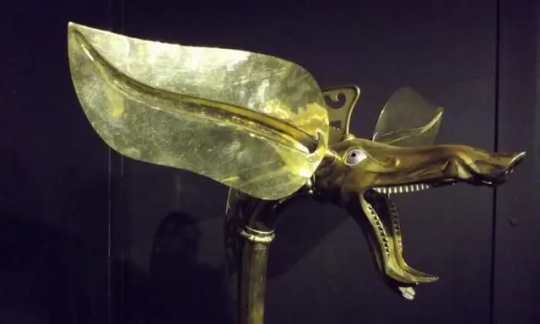

The 'Carnyx' Nightmare of the Roman Soldiers
The Carnyx was a brass musical instrument used as a psychological weapon of war by the ancient Celts between 300 BC and 200AD in western and central Europe and beyond.
The carnyx was once widespread throughout much of Europe, although only a dozen or so fragments are known to us.
It was carried by bands of Celtic mercenaries; it was present at the attack on the Greek sanctuary at Delphi in 279 BC; it defied Julius Caesar in Gaul; and it faced Claudius when he invaded Britain. They are even shown on a Buddhist sculpture in India, proof of the far-flung connections of the Iron Age world.
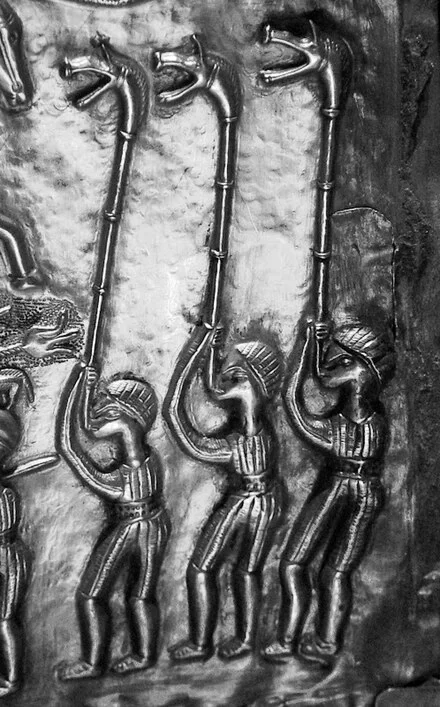
However, they were not only used by the Celts; they were also used by the Dacians in modern Romania. The term “Celtic” is a complicated one. The concept of a pan-European Celtic culture is a myth; rather, aspects of art and technology were shared across vast distances by diverse cultures. The carnyx was one example of this.
A 12-foot-long, thin bronze tube with right-angle bends on both ends made up the carnyx. The lower end ended in a mouthpiece, and the upper end flared out into a bell that was usually decorated to look like a wild boar’s had. Historians believe it had a tongue that flapped up and down, increasing the noise made by the instrument. The carnyx was played upright so that the boar’s head bell protruded well above the warriors’ heads. Its primary goal was to create more noise and confusion on the battlefield.
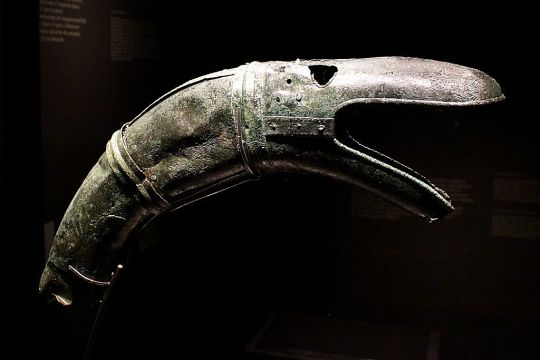
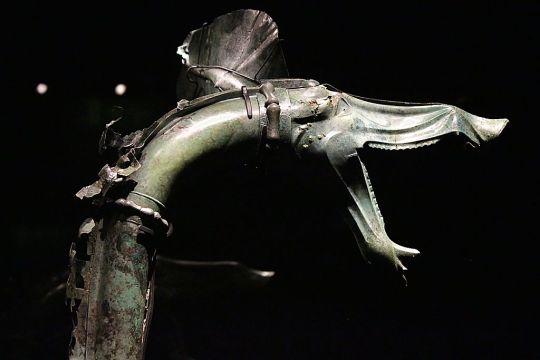

The Greek historian Polybius (206-126BC) was so impressed by the clamor of the Gallic army and the sound of the carnyx, he observed that “there were countless trumpeters and horn blowers and since the whole army was shouting its war cries at the same time there was such a confused sound that the noise seemed to come not only from the trumpeters and the soldiers but also from the countryside which was joining in the echo”.
And the Roman historian Diodorus Siculus wrote, “Their trumpets are also of a peculiar and barbaric kind which produce a harsh, reverberating sound suitable to the confusion of battle.”
Archaeologists discovered a hoard of ritually destroyed weapons in 2004, including a dozen swords, scabbards, spearheads, a shield, bronze helmets, an iron helmet shaped like a swan, a cauldron, animal remains, and seven carnyces. Before the Tintignac discovery, the remains of only five actual carnyces had been found.
The finest was unearthed in Deskford, Scotland in 1816. The Deskford carnyx only has the boar’s head bell and is missing the mane, tongue, and tubing. Images of Carnyx players have been found as well. A Roman denarius, dating from 48 BC bears a representation of a Carnyx. Three carnyx players are featured prominently on the Gundestrup Cauldron, which was found in a Danish peat bog.
One of the seven found at Tintignac, on the other hand, was almost entirely complete. The Tintignac Carnyx was broken into 40 pieces. When puzzled back together, it was found to be just an inch short of six feet long with a single missing section of the tube. The bell was a boar’s head with protruding tusks and large pointed ears. Once restored, the Tintignac Carnyx proved to be the first virtually complete carnyx ever found.
By Leman Altuntaş.
Music video by John Kenny.
#The Carnyx#The 'Carnyx' Nightmare of the Roman Soldiers#Iron Age war trumpet#ancient artifacts#archeology#archeolgst#history#history news#ancient culture#ancient civilizations#celtic mythology#celtic history#roman history#roman empire#roman legion
2K notes
·
View notes
Text
I was thinking about how allot of legends of Saint Patrick are basically him demonstrating that the Christian god is more powerful than local pagan deities to get converts and it made me think of like anime community power scalers and it made me think of these memes to create as hypothetical memes in early Middle Ages Irish social media:
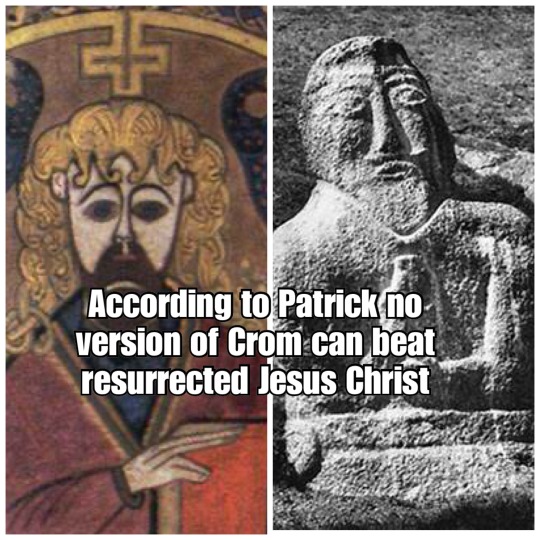

I apologize if there’s anything wrong with the Irish language one colonialism did a number on it even in Ireland so it didn’t exactly survive in the diaspora for me so I used google translate 😅
#shut up alex#personal#celtic#irish american#irish#ireland#saint patrick’s day#saint patrick#history#history memes#irish history#irish history memes#irish culture#gaelic#celtic history#my memes#homemade memes#original memes
32 notes
·
View notes
Text
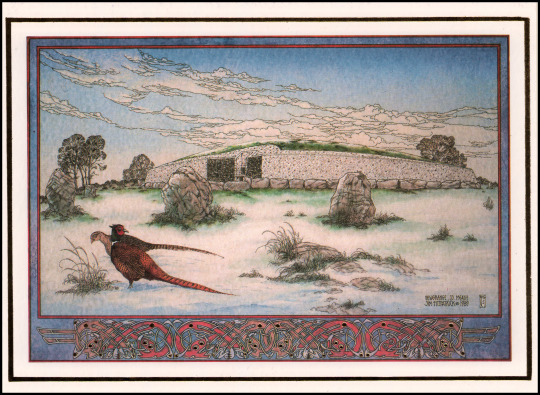
Newgrange, County Meath by Jim Fitzpatrick, 1989.
Greystoke Trading Company
#celtic#irish#celtic art#irish art#celtic history#irish history#illustration#jim fitzpatrick#greystoke trading company
22 notes
·
View notes
Text
INTRODUCTION TO CELTIC MYTHOLOGY.
The people of Celtic decent were once spread over a large part of Europe. Even at one point managing to get as far as Asia Minor.
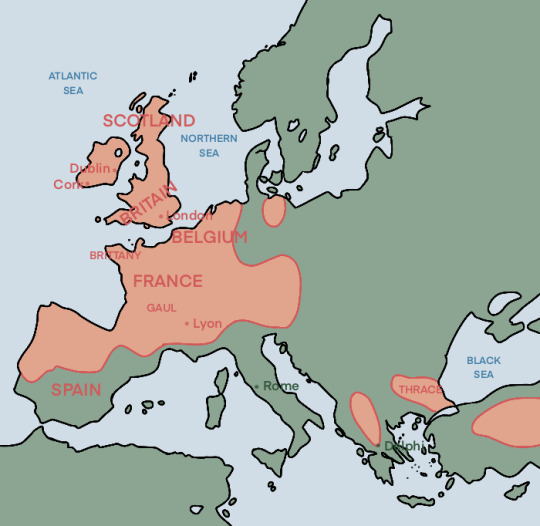
But now most live mainly in England, Ireland, Scotland, Wales, Brittany, Cornwall and the Isle of Man.
Although, at the time, Rome was heavily incorporated into Celtic Europe, the Celts still continued to worship their gods until the Romans officially adopted Christianity and paganism begun to fade out, either only some gods and Heroes being remembered. Though the heavy influence of Christianity was heavy, monks had managed to write down many sagas.
To the monks, almost all knowledge of Celtic mythology is owed. Except for a few welsh tales, almost no mythology was committed to writing as oral speech was preferred over written stories.
In early mythology, fighting, fearless warriors and endless conflicts were the centre of the stories, which is less terrible when you realise that the Celtics believed in reincarnation- death was a resting place between lives instead of a permanent place for the dead.
Later storied focused more around Christianity. The Arthurian legends depicts this, with the holy grail; a cup used at the last supper, and at the crucifixion of Christ to catch the blood.
10 notes
·
View notes
Text
does anyone know resources for me to learn more about celtic traditions from before christianity? i have predominantly celtic ancestry and want to learn more about it. i also have nordic ancestry and i will probably learn about heathenism but im focusing on the celtic side now since i have more celtic than nordic.
22 notes
·
View notes
Text
DID YOU KNOW???
Did you know? The word “fahrenheit” originates from the ol’ english “fairer-than-height”, which was an insult aimed towards cisgender women, who were Fair but had no Height. (In the middle-ages, height was needed to survive the harsh winters)
Talk about a cold shoulder! 🥶
#etymology#word origins#english#old english#middle english#language#linguistics#history#european history#british history#celtic history#facts#factoid#fun fact#trans rights#trans pride#2slgbtqia+#lgbtqia#lgbtq+#trans history
10 notes
·
View notes
Text
hey! irish tumblrians. i need help, i’m trying to research irish historical culture, particularly in tandem to clans and how they work, but the pre-christian stuff in general! If anyone has any resources please help me find them! I want to make a story based off of this as i’ve always been drawn towards my irish family, but never had a chance to reconnect.
(I’m not fully irish myself and will never consider myself irish but i do want to have a relationship with all sides of my heritage because my family on both sides has lost any cultural connection & that bothers me)
My current ideas are inspired by cats, as i (creatively) work easiest with nonhumans, and i am debating making a show out of whatever i come up with one day.
definitely going to incorporate mythology inspiration, but i know more about irish paganism (not much in broad terms) than i know about the rest of pre-christian irish culture.
Any form of response is okay! I honestly just think exploring this creatively would be a fun way to learn it.
#xenomoggy#xenofiction#irish history#irish culture#resource search#irish resources#celtic culture#celtic history
9 notes
·
View notes
Text

Guess you could never say, the ancient Celtic people ever went over their heads!
💀😂💀
#history#ancient celts#heads#family heirloom#skulls#ancient#celtic history#gaul#ancient romans#france#ancient practices#european history#celtic#ancient culture#celtic mythology#ancient history#spooky facts#classical age#french history#ancient warfare#cedar oil#history mystery#nickys facts
8 notes
·
View notes
Text

Ignorance is bliss I guess 🙄
Conversation I had with some old biddy trying to say that Halloween has to do with the devil
Like what no
12 notes
·
View notes
Text
Y’all, I was today years old when I learned that Merry’s name wasn’t some crap that Jonald made up…it was actually a real life name! Meriadoc is a super old Celtic name that goes back to at LEAST the 6th century with Saint Meriasek (alternate spelling) and the legendary founder of Brittany, Conan Meriadoc. The more you know.
#history#celtic history#Celtic#brettonic#Bretons#jrr tolkien#tolkien#lotr#lord of the rings#hobbits#etymology#Conan meriadoc#merry brandybuck#meriadoc brandybuck#name history#names
12 notes
·
View notes
Text
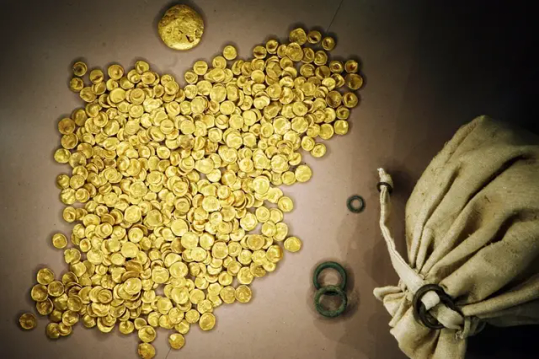
German Police Arrest Suspects in Theft of 483 Celtic Gold Coins from Museum
The men were found in possession of gold bars, likely made by melting down the stolen coins.
Gold bars made from melted-down ancient Celtic coins that were stolen in a museum heist have been found by police in Germany. Four suspects have been arrested.
Thieves stole 483 coins from the Celtic Roman Museum in Manching after midnight on November 22, 2022. They severed several fiber optic cables, which caused internet and telephone connections in 13,000 households to go down for several hours. About an hour later, the museum was broken into and the suspects pried open two locked doors to make off with the gold coins.
The prosecutor’s office in Ingolstadt and the art investigators of the Bavarian State Criminal Police Office took over the investigations and recovered two blue crowbars, pruning shears, and a side cutter in the nearby area.


Police found a trace of DNA on the recovered items and conducted search in a nationwide DNA database and in neighboring countries, which alerted investigators to a string of eight similar thefts in Germany and Austria since 2014.
“The perpetrators were always equipped in the same way during the burglaries,” police said in a statement translated from German. “They wore black overalls with balaclavas and each had identical crowbars, screwdrivers and an angle grinder with several cutting discs.”
By examining the crime spree incidents together, investigators were able to identify the first suspect, a 42-year-old man from Schwerin, believed to have been involved in an April 2018 burglary. Through him, police identified a second suspect described as a 46-year-old German man.

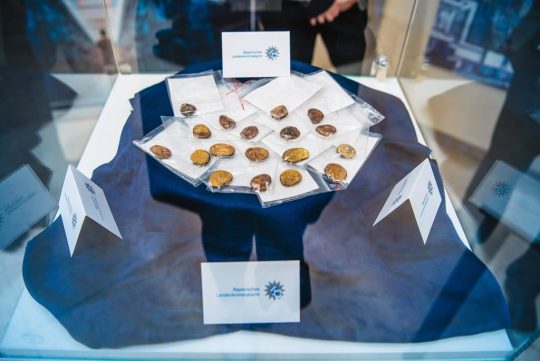
Investigators eventually discovered two more suspects, a 50-year-old man from Schwerin and a 43-year-old man from Berlin, police said. The four men were arrested Tuesday and brought before investigating judges on Wednesday.
Police said the 43-year-old man from Berlin was carrying 18 gold nuggets in a plastic bag when he was arrested. Forensic analysts identified the material composition as having levels of gold, silver, and copper that corresponded to the composition of the stolen coins.
Prosecutors have charged the men with aggravated gang theft in combination with damaging property and disrupting telecommunications systems.
The museum praised the “significant success” of the investigation in a brief statement on Facebook.
By Adam Schrader.

(Wonderful news that there has been arrests in this case but very sad that some, if not all of the coins have been destroyed)
#German Police Arrest Suspects in Theft of 483 Celtic Gold Coins from Museum#gold#gold coins#celtic gold coins#treasure#stolen#looted#ancient artifacts#archeology#archeolgst#history#history news#ancient history#ancient culture#ancient civilizations#celtic history
98 notes
·
View notes
Text
youtube
More Celts!
6 notes
·
View notes
Text
Annual lesson on the origins of Halloween.
Practiced by the Celts (Keltoi) in Ireland as long as 2,000-2,500yrs ago Samhain /sow-wawn/was a pagan festival to mark the official beginning of Winter on the Celtic calendar.
The Celts believed that the barriers between the lands of the living and dead would come down on this night, allowing the spirits of the dead to roam the lands of the living again.
The Celts (like many pagan cultures) didn’t have the bestest opinion of the afterlife though. They believed the spirits were lonely there and so, on Samhain, would look to take the living back with them for company. Almost all modern Halloween traditions come from their methods of avoiding this supernatural abduction.
1. Bonfires

A tradition still practiced in Ireland for Halloween. Pretty self-explanatory…big fire scare off ghosts
🤷♂️
2. Trick or Treat

Another idea that was pretty common in pagan societies.
Don’t want lonely spirits of the dead coming in your home for some kidnapping? Put your best food and drink out front so they’re satisfied and leave you alone.
How this developed into the modern practice of children going door-to-door is hotly debated.
3. Costumes

How do you keep yourself from being whisked away by lonely ghosts?
CAMOUFLAGE!!!
What self-respecting spirit of the dead wants to bring another spirit of the dead back to the afterlife with them? That place is already full of them.
4. Jack O’Lanterns
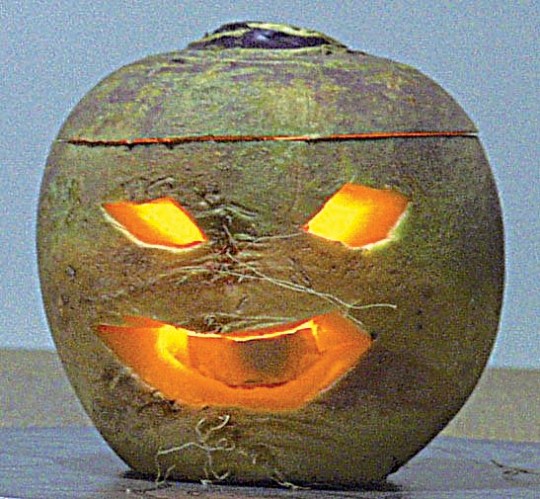
This is the one we didn’t get from the Celts. It comes from an Irish folk-tale which tells the story of Jack, who makes a deal with the devil, then tricks the devil to escape being taken to hell.
Devil doesn’t like this and curses Jack to wander the dark roads and back ways, far from civilisation for eternity, with only an ember of hellfire to light his way. Jack placed the ember in a carved out turnip (see pic above) which was a common poor man’s lantern in Ireland in the past and so he became Jack O’Lantern.
When the Irish emigrated to the US they brought these traditions with them, but there were no turnips so they used pumpkins instead.
#halloween#hallowe’en#all hallows eve#Oíche shamhna#samhain#irish history#irish culture#celtic history#celtic culture
29 notes
·
View notes
Text
i have a question to put out into the interwebs in hopes that someone will have a thread for me to grasp at.
i am an American who has been very invested in reconnecting with my Irish roots for a long time. I've been researching my genealogy and ancestry, but I've also been studying the history and language very actively.
separately, i am also a practicing witch who's practice is largely focused on divination and ancestor work. recently i have been feeling a pull towards Celtic dirty work, which is interesting because my spiritually has never been very religious, if that makes any sense. but i have been struggling to find genuine sources to look further into it.
there are plenty of sources on history and language. lots of resources on political intricacies. and i have learned so much about those things. but i am struggling to find information on prechristian Irish deities and religion. about the folk magic that is traditional to my ancestors. what i am able to find runs into one of a few problems.
one is a small group of white supremacists in my country attempting to twist Celtic folklore like some of them have done with Norse folklore. those i report when possible and avoid at all costs.
a much smaller but related problem is the amount of resources where i can tell it has been misappropriated somehow but i can't tell exactly how badly. the people who write entire books about fairie circles and leprechauns but can't quite seem to agree on the stories and don't understand the language that said story came from. there's also the handful of academic things i have found but they have a habit of conflicting each other and having fragmented info with no source.
which leads me to my final problem, the primary sources that do exist being written at best by Catholic Romans trying to cram a pantheon into their religion, or by Saxon/English invaders who thought the stories were neat enough to butcher.
i understand that that is how a lot of info about prechristian Irish beliefs and culture exists, but i feel like there has to be something I'm missing. I've spent so much of my life researching and learning about parallel topics and it feels like there has to be something with the answers I'm looking for. someone somewhere who at least has a place for me to go looking that i haven't yet, or maybe who knows of a person or community i can talk to that I've been missing who can help me learn about this properly.
if i had the financial resources and physical ability to travel to Ireland and dig deeper myself i would in a heartbeat. but i have hit a wall and if anyone has suggestions for how i can get some clarity in how to move forward with this, that would be so helpful. if i am able to learn more i want to document what i find and how to help anyone else who is looking. does anyone know what it is I'm missing? or is anyone on a similar journey and willing to collaborate in looking?
Go raibh míle maith agat as do chabhair
#irish#Ireland#Éire#irish mythology#irish history#irish witch#witchcraft#celtic#celtic paganism#celtic pagan#research#research help#celtic religion#celtic history
13 notes
·
View notes
Text
AMAIRGEN
Amairgen, sometimes known as Amergin, was one of the first Irish druids, which were ancient priests in Celtic lands. He came to Ireland with the Milesians. These children of Milesius, who was a leader of the Celts that lived in Spain, were believed to be the ancestors of the present-day Irish. Having defeated the divine rulers of Ireland, the Tuatha de Danann, the Milesians could not agree on which of their leaders should be king. Two sons of Mil, Eremon and Eber, contested the throne and for the sake of peace the island was divided into two kingdoms, one in the north, the other in the south. However, peace was not to survive for long, and renewed fighting between the followers of the two brothers plunged the country once again into dreadful strife. The fighting came to an end only with the death of Eber. Amairgen then installed Eremon as High King of Ireland at Tara. Even then conflicts still occurred because of the ceaseless rivalries between lesser rulers.
2 notes
·
View notes
Text
youtube
How to Eat like a Celtic Druid - Celtic Boar Stew - Tasting History with Max Miller
#Max Miller#Tasting History with Max Miller#How to Eat like a Celtic Druid#Celtic Boar Stew#Food#Cooking#Celts#Celtic Cuisine#Celtic History#History#YouTube
3 notes
·
View notes